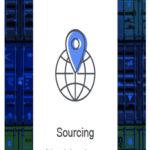Every year seems to result in malicious online agents coming up with ever more sophisticated and damaging cyberattacks. 2017 was certainly no different and high-profile victims included Deloitte, Equifax and the UK’s National Health Service. Businesses and security experts will have spent much of 2017 analysing and safeguarding against the developing threats, but they will be well aware that 2018 will bring new dangers. Here’s a look at what cyber security developments we might see throughout the rest of the year.
Ransomware on the rise
Ransomware was one of the most successful cyberattack methods deployed in 2017 and it’s likely to see continued success this year. The reason for ransomware’s popularity is chiefly because of the financial rewards it offers to cybercriminals. Victims are left with a difficult choice: Pay a substantial ransom fee or lose access to their important files forever. Often, they choose the former, which provides hackers with plenty of incentive to repeat their exploits elsewhere.
There are ways that businesses can protect themselves against ransomware, however. Security education is vital to ensure that staff do not click on malicious links or use infected USB sticks, both of which have been used to contaminate PCs with ransomware. Implementing disaster recovery as a service (DRaaS) can also mitigate the damage caused by ransomware by allowing companies to restore their systems to a time before they became infected. If ransomware is to continue to pose a threat in 2018, then expect an uptake in DRaaS solutions.
Cyber-warfare
Another development that is likely to continue throughout 2018 is the rise of state-sponsored cyberattacks. Rumours of Russian interference in the 2016 US Presidential Election persist and national governments need to shore up their cyber defences if further attacks are to be prevented. Attacks could focus on spreading misinformation to undermine democracies or look to damage important infrastructure. Either way, the rise of cyber-warfare can no longer be ignored.
Home hacking
The Internet of Things (IoT) remains in the early stages of development, but it is predicted to accelerate rapidly in the years to come. In the home, an influx of digital devices is expected to create a wealth of opportunities for businesses, but there will also be new vulnerabilities too. If thermostats, fridges and smart TVs are connected online, then they provide opportunities for hackers to steal data or negatively impact performance. If 2018 sees a rise in IoT devices, then software and hardware engineers need to ensure that they have robust cyber defences in place.
GDPR places a spotlight on privacy
The General Data Protection Regulation (GDPR) comes into effect on 25 May 2018 and will bring an increased spotlight on data privacy. The legislation introduces new rules on gaining data consent, storage and responding to a breach. Businesses will need to inform the relevant data protection authority of any breach within 72 hours of becoming aware of it, which means companies can no longer keep their security missteps from going public. The significant fines imposed by GDPR will also ensure that businesses all over the world take data security extremely seriously in 2018.








